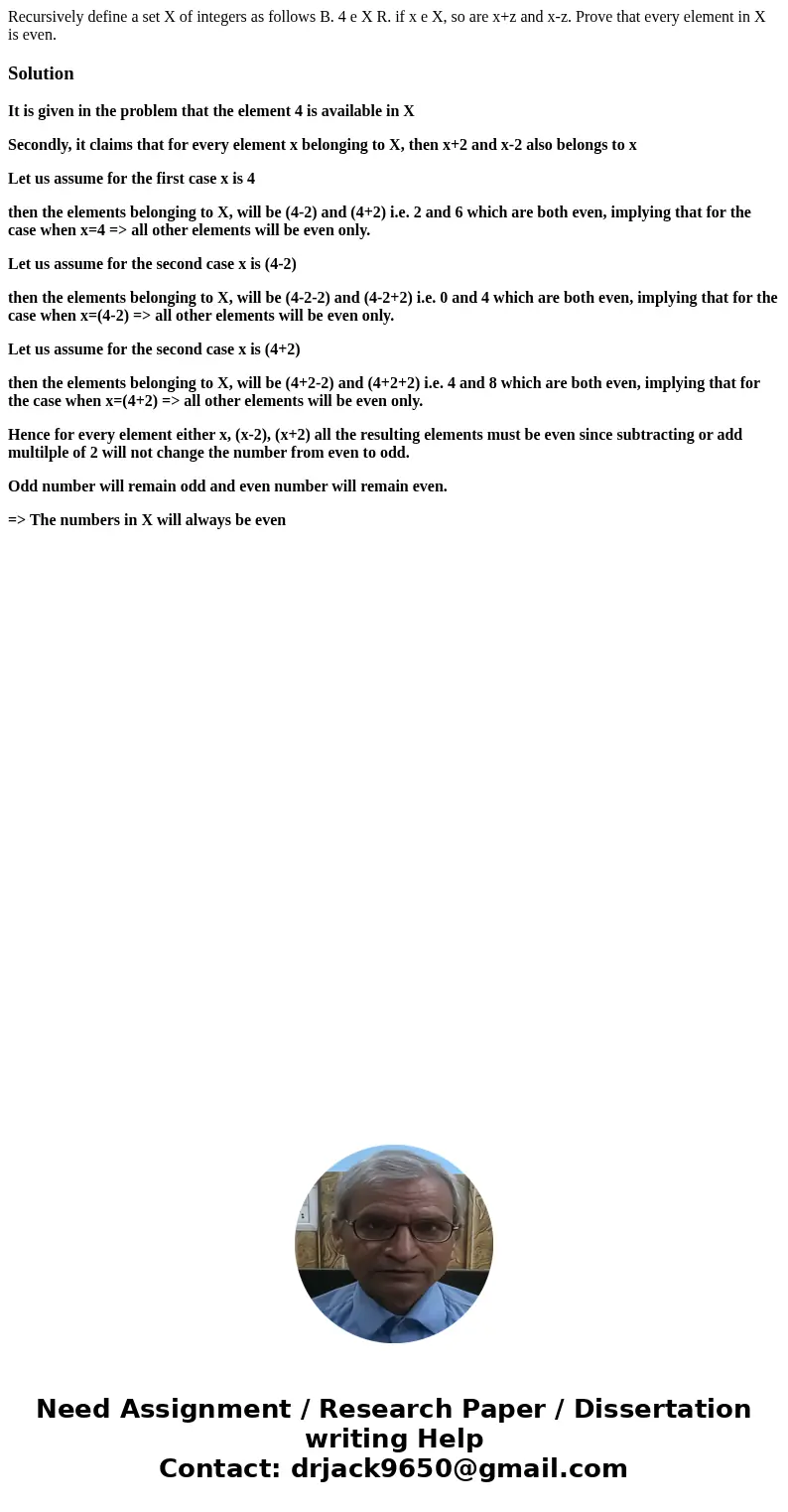Recursively define a set X of integers as follows B 4 e X R
Solution
It is given in the problem that the element 4 is available in X
Secondly, it claims that for every element x belonging to X, then x+2 and x-2 also belongs to x
Let us assume for the first case x is 4
then the elements belonging to X, will be (4-2) and (4+2) i.e. 2 and 6 which are both even, implying that for the case when x=4 => all other elements will be even only.
Let us assume for the second case x is (4-2)
then the elements belonging to X, will be (4-2-2) and (4-2+2) i.e. 0 and 4 which are both even, implying that for the case when x=(4-2) => all other elements will be even only.
Let us assume for the second case x is (4+2)
then the elements belonging to X, will be (4+2-2) and (4+2+2) i.e. 4 and 8 which are both even, implying that for the case when x=(4+2) => all other elements will be even only.
Hence for every element either x, (x-2), (x+2) all the resulting elements must be even since subtracting or add multilple of 2 will not change the number from even to odd.
Odd number will remain odd and even number will remain even.
=> The numbers in X will always be even

 Homework Sourse
Homework Sourse